Middle Grades Longitudinal Study of 2016-2017 (MGLS:2017) Cognitive Interviews Reading and Accommodations
NCES Cognitive, Pilot, and Field Test Studies System
Volume 2 MGLS 2017 Cog Labs 2014 Reading & Disability - Instruments
Middle Grades Longitudinal Study of 2016-2017 (MGLS:2017) Cognitive Interviews Reading and Accommodations
OMB: 1850-0803
National Center for Education Statistics
Middle Grades Longitudinal Study of 2016-2017 (MGLS:2017) Cognitive Interviews
Set 2
Volume 2
Cognitive Laboratory Participant Materials
OMB# 1850-0803 v. 103
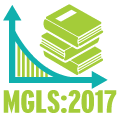
May 9, 2014
Middle Grades Longitudinal Study of 2016-2017 (MGLS:2017) Mathematics Assessment For Students With disabilities
OMB #: XXXX-XXXX
Expiration Date: XX/XX/20XX

Middle Grades Longitudinal Study
of 2016-2017 (MGLS:2017)
Mathematics
Assessment
Cognitive Interview
May 9, 2014
According to the Paperwork Reduction Act of 1995, no persons are required to respond to a collection of information unless it displays a valid OMB control number. The valid OMB control number for this information collection is XXXX-XXXX. The time required to complete this information collection is estimated to average 60 minutes per response, including the time to review instructions, search existing data resources, gather the data needed, and complete and review the information collection.
MIDDLE GRADES LONGITUDINAL STUDY OF
2016-17 (MGLS:2017):
STUDENT COGNITIVE INTERVIEW QUESTIONNAIRE
Thank you for coming here today to help us! You and other middle-grade students like you from many different schools will be asked to help us improve some math questions for a study of students in grades 6, 7, and 8.
As you answer the questions, I also want you to tell me if the questions are easy or hard to understand. For example, is it easy or hard to understand what the directions are asking? Are there words that you don’t understand?
There are no right or wrong answers to these questions, but please try your best, because the things you tell us today will help us make the questions better.
GO TO THE NEXT PAGE TO BEGIN.
MGLS NS052
Starting at the point A marked on the number line below, add -4. Plot your result on the number line.

STOP
STOP
AFTER YOU FINISH THIS ITEM, PUT DOWN YOUR PENCIL AND WAIT FOR FURTHER INSTRUCTIONS.
MGLS NS053
Starting at the point A marked on the number line below, subtract -3. Plot your result on the number line.

STOP
STOP
AFTER YOU FINISH THIS ITEM, PUT DOWN YOUR PENCIL AND WAIT FOR FURTHER INSTRUCTIONS.
MGLS F058
Pierre is painting a wall in his house. He paints at a constant rate. His friend Louis already painted some of the wall for Pierre. The table below shows the total area painted after Pierre paints for a certain number of minutes.
-
Number of minutes that Pierre spent painting (m)
Total area painted in square feet (a)
1
27.75
6
61.50
Pierre constructed the following function to represent the relationship between a, the total area painted in square feet, and m, the number of minutes that Pierre spent painting.
a = 6.75m
Is Pierre’s equation correct? Answer “yes” or “no.”
Explain your reasoning.
STOP
STOP
AFTER YOU FINISH THIS ITEM, PUT DOWN YOUR PENCIL AND WAIT FOR FURTHER INSTRUCTIONS.
MGLS EE010
Which of the following are equal to 23? Choose all that apply.
6
8
9
12
3(2)
2 * 2 * 2
4(2)
2(2 * 2)
3 * 3
(2 * 2) * 3
STOP
STOP
AFTER YOU FINISH THIS ITEM, PUT DOWN YOUR PENCIL AND WAIT FOR FURTHER INSTRUCTIONS.
MGLS EE033
Evaluate this expression when P = 7.

STOP
STOP
AFTER YOU FINISH THIS ITEM, PUT DOWN YOUR PENCIL AND WAIT FOR FURTHER INSTRUCTIONS.
Thank you for your participation!
Middle Grades Longitudinal Study of 2016-2017 (MGLS:2017)
READING Assessment For Students with and Without Disabilities
OMB
#: XXXX-XXXX
Expiration
Date: XX/XX/20XX
Middle
Grades Longitudinal Study
of
2016-2017 (MGLS:2017)
Reading
Assessment
May
9, 2014
According
to the Paperwork Reduction Act of 1995, no persons are required to
respond to a collection of information unless it displays a valid
OMB control number. The valid OMB control number for this
information collection is XXXX-XXXX. The time required to complete
this information collection is estimated to average 60 minutes per
response, including the time to review instructions, search existing
data resources, gather the data needed, and complete and review the
information collection.

Cognitive Interview
Middle Grades Longitudinal Study of 2016-17 (MGLS:2017)
Student Reading Assessment for typicaLLY DEVELOPING STUDENTS AND STUDENTS WITH DISABILITIES
Thank you for coming here today to help us! You and other middle-grade students like you from many different schools will be asked to help us improve reading questions for a study of students in grades 6, 7, and 8.
As you answer the questions, I also want you to tell me if the questions are easy or hard to understand. For example, is it easy or hard to understand what the directions are asking? Are there words that you don’t understand?
There are no right or wrong answers to these questions, but please try your best, because the things you tell us today will help us make the questions better.
You will work on two sets of questions today. Some of the questions you will see today may feel difficult, and some will feel less difficult. Please just try your best to work through them. The instructions for how to complete each question will be presented on the computer. Try to work independently, but if you can’t figure out what you are supposed to do, ask me, and I will help you.
GO TO THE NEXT PAGE TO BEGIN.
Middle Grades Longitudinal Study of 2016-17 (MGLS:2017)
Student
Reading Assessment for typicaLLY DEVELOPING STUDENTS AND STUDENTS
WITH DISABILITIES
Example Items
All students will first complete a block of questions that measure components of reading. Based on students’ performance on the first block, the computer program will present a message indicating which second block they should complete. The second block will contain either additional reading component questions or questions embedded in a scenario-based comprehension assessment. The instructions have been organized according to the types of blocks the student may encounter. A description of each block is provided below, followed by sample item(s) for each block.
Block 1—Reading Components
The first block contains three sections: vocabulary, morphological awareness, and sentence comprehension. The online program will instruct the student on how to move through the assessment and how to answer the different item types. This section will contain no more than 46 items, and all items can be done very quickly. We estimate this entire block will take the student approximately 10 minutes to complete.
Block 2a—Additional Reading Components
Some students will be assigned a second block that contains additional reading component questions. This block is designed to take the student approximately 20 minutes. As in the first block, the online program will instruct the student on how to move through the assessment and how to answer the different item types. Navigation in this block will be similar to the first block. Students will press the space bar to go on to the next question, and they will use the 1, 2, or 3 keys to give their answer.
Block 2b—Scenario-Based Assessment of Comprehension
Some students will be assigned a second block of scenario-based comprehension questions. This block is designed to take the student approximately 20-25 minutes. In this block, students will be presented with a scenario (for example, working with classmates to create a website) that will lead them through a variety of comprehension-related tasks on the same topic. In this block, students will encounter item types that require new ways of navigating on the screen. For example, some screens will have tabs that, if clicked, will reveal a previously-read passage. Other screens will have scrollbars because the passage is too long to present on the screen. Items may require a "click-and-click" response where the student first clicks on their answer and then clicks the location in a table where it belongs. Some examples have been provided.
Block 1—Reading Components: Sample Item

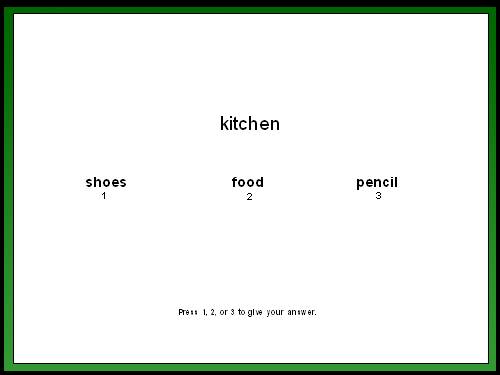
Block 2a—Reading Components: Sample Items
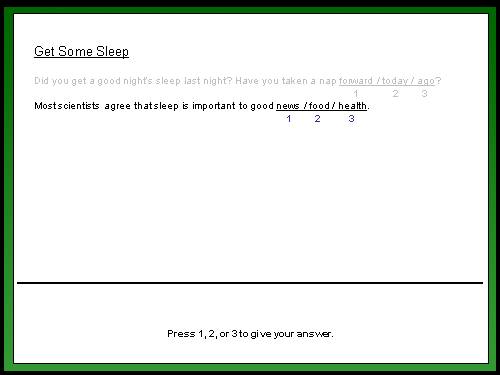
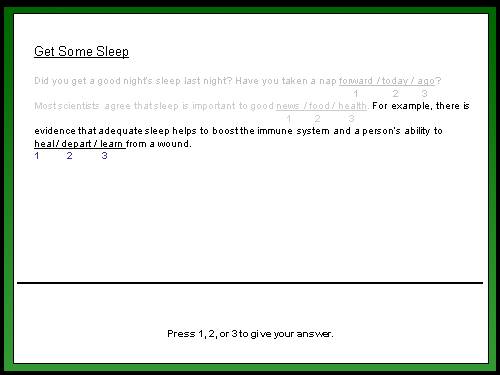
Next is a passage comprehension section. In this task, the student will see the same passage that was presented in the prior task, but now the passage will appear complete (with all the correct completions). Some of these questions will include a scroll bar because the passage is too long to fit on the screen. An example follows.

Block 2b—Scenario-Based Assessment of Comprehension: Sample Items

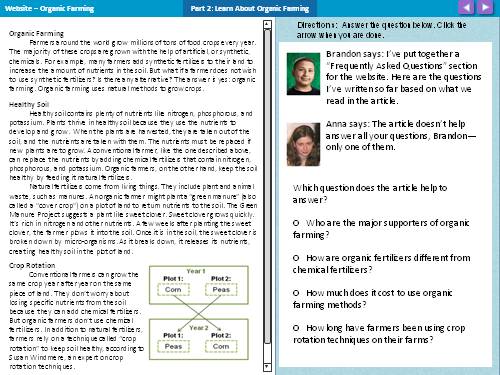
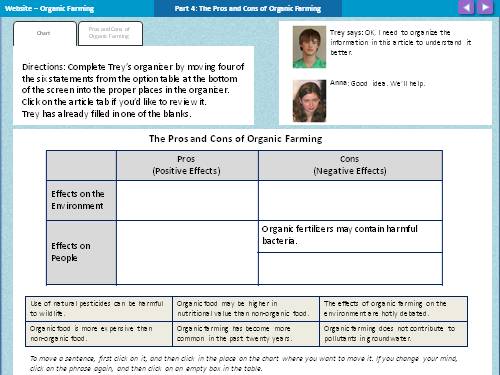 Middle
Grades Longitudinal Study of 2016-2017 (MGLS:2017)
Middle
Grades Longitudinal Study of 2016-2017 (MGLS:2017)
Student Executive Function Cognitive Interview For Students With Disabilities
OMB #: XXXX-XXXX
Expiration Date: XX/XX/20XX

Middle
Grades Longitudinal Study of
2016-2017 (MGLS:2017)
Student Executive Function Cognitive Interview
February 27, 2014
According to the Paperwork Reduction Act of 1995, no persons are required to respond to a collection of information unless it displays a valid OMB control number. The valid OMB control number for this information collection is XXXX-XXXX. The time required to complete this information collection is estimated to average 60 minutes per response, including the time to review instructions, search existing data resources, gather the data needed, and complete and review the information collection. |
Executive functions are interdependent processes that work together to accomplish purposeful, goal-directed activities and include working memory, attention, inhibitory control, and other self-regulatory processes. Executive processes work to regulate and orchestrate cognition, emotion, and behavior, which enables a student to learn in the classroom. For example, executive control involves the ability to allocate attention, to hold information in working memory, and to withhold an inappropriate response. The following are the four Executive Function tasks that will be included in the MGLS:2017 cognitive laboratory work:
The Hearts and Flowers Task measures cognitive flexibility. Stimuli (heart or flower) appear on the right or left side of the screen. There are three parts to this task: congruent, incongruent, and mixed condition. In the congruent condition, only a heart appears, and students press on the same side as the heart. In the incongruent condition, only a flower appears, and students press on the side opposite the flower. In the mixed condition, congruent and incongruent trials appear randomly, requiring subjects to switch between the two rules. Students need to remember and follow the rules for the heart or flower while processing which stimuli appears and on which side it appears, turning the instruction “press on the same [opposite] side” into the action “press right [or left].”
Stop Signal measures inhibitory control. Student see arrows that point left or right (one per screen) and are directed to press the arrow key that points the same way as quickly as they can unless they hear a beep (the stop signal). When they hear the beep, they should not press any key.
Spatial 2-Back measures working memory with a visual-spatial stimuli (unfamiliar closed figures). Students see a series of figures one at a time (one per screen) and need to press a space bar when they see the same figure that they saw two screens before.
Letter 3-Back measures working memory with a verbal stimuli (letters that students can name and repeat to themselves to remember). Students see a series of figures one at a time (one per screen) and need to press a space bar when they see the same letter that they saw 3 screens before.
References
The Hearts and Flowers Task
Diamond, A., L. Briand, J. Fossella, L. Gehlbach. “Genetic and Neurochemical Modulation of Prefrontal Cognitive Functions in Children.” The American Journal of Psychiatry, vol. 16, 2004, pp. 125-132.
The N-Back Task
Casey, B.J., Cohen, J.D., Jezzard, P., Turner, R., Noll, D.C., Trainor, R.J., et al. “Activation of Prefrontal Cortex in Children during a Nonspatial Working Memory Task with Functional MRI.” Neuroimage, vol. 2, no. 3, 1995, pp. 221-229.
Hoang, A. and L. Fellows. “Neuropsychological Tests User Guide.” Montreal, QC: McGill University, Montreal Neurological Institute.
The Stop Signal Task
Hoang, A. and L. Fellows. “Neuropsychological Tests User Guide.” Montreal, QC: McGill University, Montreal Neurological Institute.
Middle Grades Longitudinal Study of 2016-2017 (MGLS:2017)
Student Cognitive Interview Questionnaire for students with disabilities
OMB #: XXXX-XXXX
Expiration Date: XX/XX/20XX

Middle
Grades Longitudinal Study of
2016-2017 (MGLS:2017)
Student Cognitive Interview Questionnaire
February 27, 2014
According to the Paperwork Reduction Act of 1995, no persons are required to respond to a collection of information unless it displays a valid OMB control number. The valid OMB control number for this information collection is XXXX-XXXX. The time required to complete this information collection is estimated to average 60 minutes per response, including the time to review instructions, search existing data resources, gather the data needed, and complete and review the information collection. |

Thank you for coming here today to help us! You and other middle-grade students like you from many different schools will be asked to help us improve questions for a study of students in grades 6, 7, and 8. These questions are about you, your school, and your family.
As you answer the questions, I also want you to tell me if the questions are easy or hard to understand. For example, is it easy or hard to understand what the directions are asking? Are there words that you don’t understand?
There are no right or wrong answers to these questions, but please try your best, because the things you tell us today will help us make the questions better.
GO TO THE NEXT PAGE TO BEGIN.
-
A1. What do your parents/guardians do when you receive good grades in school?
When I get good grades my parents/guardians…
MARK ONE EACH ROW
Yes
No
a. Give me a reward, like a present or gift
1 □
2 □
b. Give me money or increase my allowance
1 □
2 □
c. Take me to some place special, like out to dinner or to a movie
1 □
2 □
d. Give me more opportunities to make decisions for myself
1 □
2 □
e. Encourage me to try harder
1 □
2 □
f. Are less strict with me
1 □
2 □
g. Tell me I am a good student
1 □
2 □
h. Tell me they are proud of me
1 □
2 □
i. Say I should do even better
1 □
2 □
j. Do not know about my good grades
1 □
2 □
k. Do not care about my good grades
1 □
2 □
l. Do not really do anything
1 □
2 □
m. Other (Please specify)
1 □
2 □
AFTER YOU FINISH THESE ITEMS, PUT DOWN
YOUR PENCIL AND WAIT FOR FURTHER INSTRUCTIONS.
STOP
STOP
A2. What do your parents/guardians do when you receive bad grades in school?
|
|||||||||||||||||||||||||||||||||||||||||||||
A3. During a typical weekday during the school year, how many hours do you spend hanging out or socializing with your friends? MARK ONE ONLY 1 □ Less than 1 hour 2 □ 1 to 2 hours 3 □ 2 to 3 hours 4 □ 3 to 4 hours 5 □ 4 to 5 hours 6 □ 5 or more hours |
STOP
STOP
AFTER YOU FINISH THIS ITEM, PUT DOWN
YOUR PENCIL AND WAIT FOR FURTHER INSTRUCTIONS.
A4. Which of the categories below describe the kind of work you do/did for pay? (Do not include chores or other work around the house, or an allowance you might receive.) MARK ALL THAT APPLY 1 □ Lawn work 2 □ Waiter/waitress, dishwasher, or busser 3 □ Newspaper route 4 □ Babysitting or child care 5 □ Farm or agricultural work 6 □ Other manual labor 7 □ Store clerk, salesperson 8 □ Office or clerical 9 □ Odd jobs 10 □ Other (please specify) 11 □ I have not worked for pay |
STOP
STOP
AFTER YOU FINISH THIS ITEM, PUT DOWN
YOUR PENCIL AND WAIT FOR FURTHER INSTRUCTIONS.
-
A5a. Below is a list of talents, interests, or hobbies that students your age are sometimes excited about. Please select the talents, interests, or hobbies that are very important to you. If you do not see yours listed, use the “Other” area to mark an “X” and write in that talent, interest, or hobby on the line provided.
What talents, interests, or hobbies are you excited about?
MARK ALL THAT APPLY
1 □ Math/science
2 □ Writing/reading
3 □ Computers/electronics
4 □ Team sports/athletics (Baseball, Basketball, Football, Gymnastics, Volleyball, etc.)
5 □ Physical activities (Biking, Running, Martial Arts, Skateboarding, Ice Skating, etc.)
6 □ Dance
7 □ Music
8 □ Singing/choir
9 □ Art
10 □ Drama
11 □ Volunteering/service/activism
12 □ Being in nature, caring for animals, or participating in outdoor recreation
13 □ Doing construction, architecture, or other types of mechanics or engineering
14 □ Collecting (trading cards, stamps, models, etc.)
15 □ Cooking/baking
16 □ Other (specify)
17 □ I don’t have any talents, interests, or hobbies that I am excited about
TURN
TO THE NEXT PAGE
A5b. Among the talents, interests, or hobbies you selected above (question A5a), which are you the most excited about? MARK one only 1 □ Math/science 2 □ Writing/reading 3 □ Computers/electronics 4 □ Team sports/athletics (Baseball, Basketball, Football, Gymnastics, Volleyball, etc.) 5 □ Physical activities (Biking, Running, Martial Arts, Skateboarding, Ice Skating, etc.) 6 □ Dance 7 □ Music 8 □ Singing/choir 9 □ Art 10 □ Drama 11 □ Volunteering/service/activism 12 □ Being in nature, caring for animals, or participating in outdoor recreation 13 □ Doing construction, architecture, or other types of mechanics or engineering 14 □ Collecting (trading cards, stamps, models, etc.) 15 □ Cooking/baking 16 □ Other (specify) |
TURN
TO THE NEXT PAGE
A6. Do you have a parent, mentor, friend, or another caring adult who has helped you pursue the talents, interests, or hobbies you are excited about? 1 □ Yes 0 □ No |
STOP
STOP
AFTER YOU FINISH THESE ITEMS, PUT DOWN
YOUR PENCIL AND WAIT FOR FURTHER INSTRUCTIONS.
-
A7. As things stand now, how far in school do you think you will get?
MARK ONE ONLY
1 □ Won’t finish high school
2 □ Will graduate from high school, but won’t go any further
3 □ Will go to vocational, trade, or business school after high school
4 □ Will attend college
5 □ Will graduate from college
6 □ Will attend a higher level of school after graduating from college
7 □ Don’t know
STOP
AFTER YOU FINISH THIS ITEM, PUT DOWN
YOUR PENCIL AND WAIT FOR FURTHER INSTRUCTIONS.
A8. How much do you agree with the following statement: I am definitely going to college. MARK ONE ONLY 1 □ Very strongly disagree 2 □ Strongly disagree 3 □ Disagree 4 □ Agree 5 □ Strongly agree 6 □ Very strongly agree |
STOP
STOP
AFTER YOU FINISH THIS ITEM, PUT DOWN
YOUR PENCIL AND WAIT FOR FURTHER INSTRUCTIONS.
That is all the questions we have for today.
Thank you for helping us improve our questionnaire.
Middle Grades Longitudinal Study of 2016-17 (MGLS:2017)
Parent Cognitive Interview Questionnaire for parents of students with disabilities
OMB #: XXXX-XXXX
Expiration Date: XX/XX/20XX

Middle
Grades Longitudinal Study of
2016-2017 (MGLS:2017)
Parent Cognitive Interview Questionnaire
May 9, 2014
According to the Paperwork Reduction Act of 1995, no persons are required to respond to a collection of information unless it displays a valid OMB control number. The valid OMB control number for this information collection is XXXX-XXXX. The time required to complete this information collection is estimated to average 30 minutes per response, including the time to review instructions, search existing data resources, gather the data needed, and complete and review the information collection. |

Dear parent,
Thank you for agreeing to help us with this study. Decision Information Resources (DIR) and Mathematica Policy Research are working with the National Center for Education Statistics, part of the U.S. Department of Education, to design a new national longitudinal study of how students learn and progress during 6th, 7th, and 8th grade. This study, the Middle Grades Longitudinal Study of 2016-17 (or MGLS:2017), will collect information from students, parents, teachers, and school administrators.
Today we will give you a few questions for you to review and answer. We are asking that you read over the questions and provide your best response. These are questions that parents of middle grade students across the country will be asked to answer about their children’s education, behavior, and family life. The questions will also ask about the types of services your child receives outside of school and your satisfaction with services your child receives in school for their disability. In a few days, you will receive a follow-up call about the topics covered in this letter. The call should take no more than 30 minutes. Your feedback will help us make these questions clearer for parents who participate in the study in the future.

We are interested in the conversations that parents have with their children about school.
A1. Have you talked with your child about which math courses to take next school year? 1 □ Yes 2 □ No |

We are interested in how parents respond to questions about their child’s social skills and positive behaviors.
B1. Please read the following list of items that sometimes describe children. For each of the following characteristics please mark the extent to which they are not true, somewhat, or certainly true for your child over the last six months.
|

We are interested in both the degree and frequency of parent involvement as well as the perception of involvement as a personal responsibility.
C1. Indicate how much you AGREE or DISAGREE with each of the following statements. Please think about the current school year as you consider each statement.
|
C2. Indicate HOW OFTEN you have done the following this school year.
|

D1. Did [YOUTH] ever have an IEP (Individualized Education Program)?
Note: An IEP is a written statement for each student with a disability that sets goals for the student in school, says how progress will be measured, describes the special education and related services the school will provide, how much the student will be in the regular class with nondisabled students, and lists accommodations or modifications needed to measure what the student knows through tests.
Yes 1
No 0
Don’t know 2
If D1 = 0 or 2, go to D13
D2. As of the beginning of the 2014-2015 school year, did [YOUTH] still have an IEP?
Yes 1
No 0
If D2 = 1, go to D4
D3. Why does [he/she] no longer have an IEP?
Select all that apply
No longer needs special services 1
Met IEP goals 2
[YOUTH]was declassified, school says no longer needs services 3
No longer eligible, doesn’t qualify 4
School doesn’t have the programs [YOUTH] needs 5
Parent doesn’t want [YOUTH] in special education 6
[YOUTH] did not want to be in special education 7
[YOUTH] now has a 504 Plan 8
[YOUTH] was never was in special education 9
[YOUTH] home schooled by parent 10
Other (specify) 99
 Specify
Specify
D4. In the last 12 months, did you or another adult in the household go to a meeting about an IEP for [YOUTH’S] special education program or services?
Yes 1
No 0
Don’t know 2
D5. In the last 12 months, did [YOUTH] go to [that same/a] meeting about an IEP, for [his/her] special education program or services?
Yes 1
No 0
Don’t know 2
D6. In the last 12 months, has there been an IEP meeting about [YOUTH’S] special education program or services?
Yes 1
No 0
Don’t know 2
D7. Who came up with the goals on [YOUTH]'s IEP?
Select all that apply
School 1
Me or other parent/family member 2
[YOUTH] 3
Other (specify) 99
 Specify
Specify
D8. Of the people who came up with the IEP goals, who came up with the most goals?
Select one only
School 1
Me or another parent/family member 2
[YOUTH] 3
Other (specify) 99
 Specify
Specify
D9. How active was [YOUTH] in developing [his/her] IEP?
Select one only
Very active; took a leadership role in IEP development 1
Active; participated regularly in IEP development 2
Somewhat active; participated occasionally in IEP development 3
Not active; did not participate in IEP development 4
D10. Overall, how satisfied are you with the progress [YOUTH] has made towards [his/her] IEP goals this year? Are you...
Select one only
Completely satisfied 1
Very satisfied 2
Fairly satisfied 3
Somewhat dissatisfied 4
Very dissatisfied 5
D11. Have you had any discussions with [YOUTH]'s IEP team about [his/her] transition to high school?
Yes 1
No 0
D12. Have you discussed the following topics with staff at [YOUTH]'s school?
Select one per row
|
YES |
NO |
a. How my child can develop self-determination and self advocacy skills |
1 |
0 |
b. How my child can expand social and community support networks |
1 |
0 |
c. How my child can learn “soft” employment skills (such as appropriate dress, working well in a group, following instructions) |
1 |
0 |
d. How my child can practice money management skills |
1 |
0 |
e. How my child can connect with adult service providers |
1 |
0 |
f. How my child can plan for health care needs |
1 |
0 |
g. How my child can prepare for change |
1 |
0 |
.
D13. During the past 12 months, has [YOUTH] received any of the following accommodations or services? For each accommodation or service listed, please select whether [he/she] received it through school or through outside community sources.
Select one per row
|
YES - RECEIVED THROUGH SCHOOL |
YES - RECEIVED THROUGH OUTSIDE SOURCE |
NO - DID NOT RECEIVE |
DON'T KNOW |
Academic Performance |
|
|
|
|
a. Catch-up courses or double-dosing of classes during the regular school day |
1 |
2 |
0 |
d |
b. Supplemental instruction or tutoring in academic subjects before or after school |
1 |
2 |
0 |
d |
c. Supplemental instruction or tutoring in academic subjects on weekends |
1 |
2 |
0 |
d |
d. Help connecting students to outside academic transition services, supports, or activities (e.g., tutoring, mentoring) |
1 |
2 |
0 |
d |
e. Tutor |
1 |
2 |
0 |
d |
f. Braille instruction or other related services for visually impaired (e.g., Nemeth code, abacus) |
1 |
2 |
0 |
d |
Positive Skills and Behaviors |
|
|
|
|
g. Help developing capability to dress, clean, care for self |
1 |
2 |
0 |
d |
h. Help connecting students to community skill- and behavior-related services, supports, or activities (e.g., assistive technology, networking) |
1 |
2 |
0 |
d |
i. Speech or language therapy, or communication services |
1 |
2 |
0 |
d |
j. Psychological or mental health services or counseling |
1 |
2 |
0 |
d |
k. Physical or occupational therapy |
1 |
2 |
0 |
d |
l. Orientation and mobility services (to help individuals navigate their environment) |
1 |
2 |
0 |
d |
Positive Life Functioning |
|
|
|
|
m. Reader or interpreter, including sign language |
1 |
2 |
0 |
d |
n. Audiology services for hearing problems |
1 |
2 |
0 |
d |
o. Special transportation because of disability |
1 |
2 |
0 |
d |
Other |
|
|
|
|
p. Other accommodations or services (specify) |
1 |
2 |
0 |
d |
|
|
|
|
|
FOR ANY QD13a-p=1, ASK QD14a-p.
D14. How helpful are or were the services your child or family is receiving or has received from the school
during the past 12 months?
Select one per row
|
Very helpful |
Helpful |
Not helpful |
Not at all helpful |
Academic Performance |
|
|
|
|
a. Catch-up courses or double-dosing of classes during the regular school day |
1 |
2 |
0 |
d |
b. Supplemental instruction or tutoring in academic subjects before or after school |
1 |
2 |
0 |
d |
c. Supplemental instruction or tutoring in academic subjects on weekends |
1 |
2 |
0 |
d |
d. Help connecting students to outside academic transition services, supports, or activities (e.g., tutoring, mentoring) |
1 |
2 |
0 |
d |
e. Tutor |
1 |
2 |
0 |
d |
f. Braille instruction or other related services for visually impaired (e.g., Nemeth code, abacus) |
1 |
2 |
0 |
d |
Positive Skills and Behaviors |
|
|
|
|
g. Help developing capability to dress, clean, care for self |
1 |
2 |
0 |
d |
h. Help connecting students to community skill- and behavior-related services, supports, or activities (e.g., assistive technology, networking) |
1 |
2 |
0 |
d |
i. Speech or language therapy, or communication services |
1 |
2 |
0 |
d |
j. Psychological or mental health services or counseling |
1 |
2 |
0 |
d |
k. Physical or occupational therapy |
1 |
2 |
0 |
d |
l. Orientation and mobility services (to help individuals navigate their environment) |
1 |
2 |
0 |
d |
Positive Life Functioning |
|
|
|
|
m. Reader or interpreter, including sign language |
1 |
2 |
0 |
d |
n. Audiology services for hearing problems |
1 |
2 |
0 |
d |
o. Special transportation because of disability |
1 |
2 |
0 |
d |
Other |
|
|
|
|
p. Other accommodations or services (specify) |
1 |
2 |
0 |
d |
|
|
|
|
|

If you have any thoughts or questions about the topics included in this letter, please note below and share on your follow-up call.
Again,
thank you for helping us improve our questionnaire.
You will
receive a follow-up call very soon. Your input will be instrumental
in the
design of the parent questionnaire that will be used in
the national study.
| File Type | application/vnd.openxmlformats-officedocument.wordprocessingml.document |
| Author | Sara Bernstein |
| File Modified | 0000-00-00 |
| File Created | 2021-01-28 |
© 2025 OMB.report | Privacy Policy
